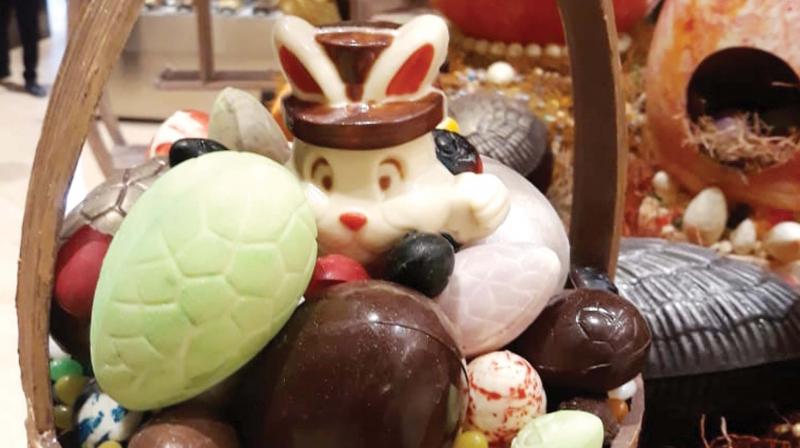New ways, same fervour
The Easter in Kerala has changed from the traditional Pesaha appam and paal to the modern-day Easter eggs and bunnies

For Renil Jacob, Easter has always been special. During childhood, it was a huge family gathering at his hometown Paravur. Little Renil, his parents, siblings, cousins, uncles and aunts — everyone in his joint family —would gather around the Pesaha appam (unleavened passover bread), prepared on the Maundy Thursday night to commemorate the Last Supper of Jesus Christ and his disciples. “Our grandfather would cut it and distribute among all of us when we relish it with the Pesaha paal (coconut milk extract sweetened by jaggery). I can still feel the smell of the appam and the taste of the paal when I think about it,” recalls Renil.
Years later, the traditions and customs have changed. Families became smaller and food became a huge part of the life of Renil, who now serves as the pastry chef of Grand Hyatt Bolgatty. From the nostalgia-filled aroma of the Pesaha appam, his Easter ambience has changed into fondants, pastries and chocolates used to create Easter eggs and bunnies. “At home, we still prepare Pesaha appam and paal the old way, but at our hotel, it’s all Easter eggs and chocolates. We have created a huge display of Easter eggs using over 200 kg of chocolate,” he smiles.
So, how did Easter egg, an idea pretty unknown in Kerala for long, travel across the continents and reach God’s own country? Renil, who has served as a chef in various countries across the globe, laughs, “I, too, was surprised to see the Easter egg for the first time in Europe. At the restaurants I worked there, Easter was so colourful. The more I learned about its origin, the more fascinated I was.”
Easter egg, he says, has its beginnings similar to Tamil Nadu’s harvest festival Pongal. “Egg being the symbol of new life, Easter egg represents Jesus’ resurrection. At the beginning, Easter eggs were boiled eggs dipped in various colours. People have it at the end of the Lent season and celebrate Easter. But as times changed, boiled eggs were replaced by chocolates and candies,” Renil explains.
Dyed eggs have paved way for coloured, wood-carved, plastic, confectionery-filled and even golden eggs. Like appam and paal that symbolise Jesus’ flesh and blood respectively, the Easter eggs represent the empty tomb of resurrected Christ. “Not many were aware of the history of Easter eggs when they showed up in Kerala. But now, people are showing interest in the story,” he says.
Sharing his European Easter experience, Renil says, “There, it’s not Pesaha appam, but Easter cross bun that is being shared to observe Maundy Thursday and Good Friday. I still remember the surprise when I saw a huge Easter egg thrown on the table and the candy blast that followed! People order Easter egg as dessert and break it open as they savour the candies, jelly beans and chocolates stuffed inside.”
Historians trace back the folk custom of Easter egg staining to the Mesopotamian era after which it was taken over by Orthodox Christianity and later, spread across Europe. As centuries passed, hardboiled eggs took the form of chocolates and candies; and harvest festival got substituted by Easter egg hunt, egg rolling, egg tapping, egg dance, Easter bunnies, so on.
Renil observes, “Changes are inevitable. Kerala too has different varieties of Pesaha appam as geographies change. And now, it’s a small world. Like bunnies and eggs that crossed the seas, our festivities too have earned a global charm. Let’s celebrate happiness and new beginnings. Happy Easter!”

